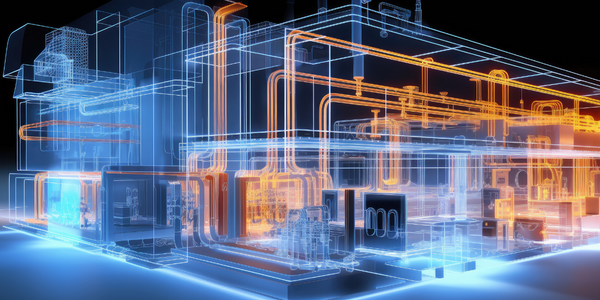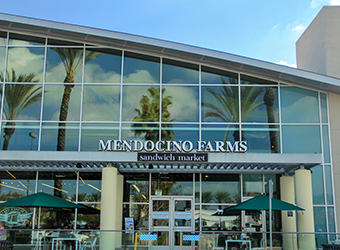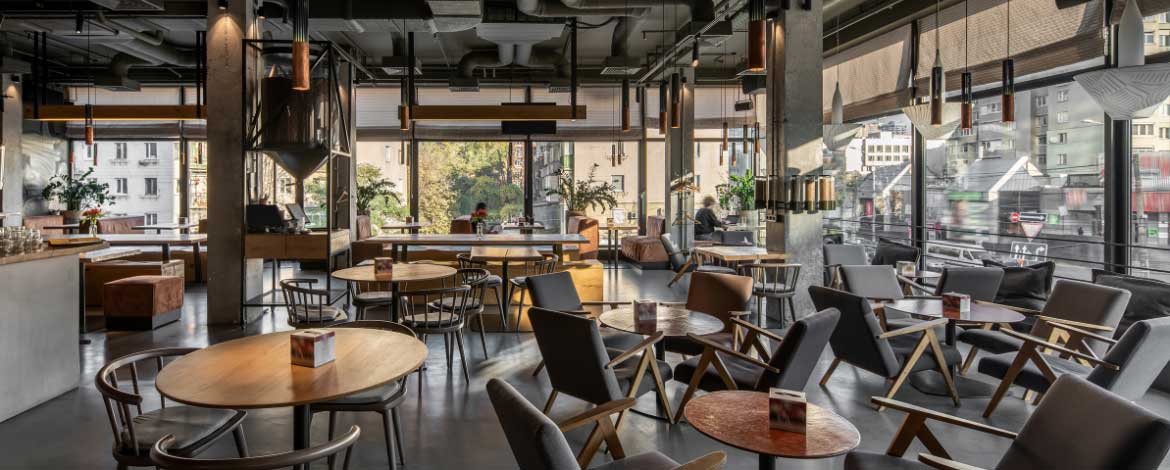Welcome to the future of facility management! As a dedicated facility manager, you know that staying ahead of the curve is key to success. In the digital age, embracing automation and AI is no longer a luxury – it's a necessity. Let's explore how integrating advanced technologies like CMMS platforms, IoT sensors, and robots can revolutionize your facility management practices and take them to new heights.
Embrace the Power of CMMS Platforms
Streamlined Workflows: Bid farewell to manual processes and paperwork. With a robust CMMS platform, you can digitize work orders, track maintenance schedules, and manage assets effortlessly. Save time and stay organized.
Data-Driven Insights: CMMS platforms offer valuable data insights to make informed decisions. Leverage real-time reports and trends to optimize maintenance strategies and boost efficiency.
Optimized Resource Allocation: Allocate resources smartly with predictive maintenance capabilities. Identify potential issues before they escalate, saving costs and minimizing downtime.
Harness the Potential of IoT Sensors
Real-Time Monitoring: Equip your facility with IoT sensors to monitor critical systems in real-time. You'll have a comprehensive view of your facility's performance from temperature and humidity to energy usage.
Proactive Maintenance: Detect anomalies early and address them proactively. IoT sensors can identify equipment issues, preventing breakdowns and costly repairs.
Enhanced Safety: Create a safer environment with IoT sensors that monitor hazardous areas and alert your team to potential risks. Safety first, always!

Embrace the Robot Revolution
Efficient Cleaning and Maintenance: Robots can take over repetitive tasks like cleaning and maintenance, freeing up your team for more strategic projects.
24/7 Operations: Some robots can work around the clock, ensuring continuous monitoring and efficient operations, even during off-hours.
Augmented Workforce: Robots and humans make a powerful team. Embrace robots as valuable allies that complement your team's skills and enhance productivity.

Overcoming Challenges and Embracing Change
Training and Adoption: Empower your team with training on the new technologies. Address any concerns they might have and highlight the benefits of automation and AI.
Data Security and Integration: Ensure robust data security protocols when implementing new technologies. Also, focus on seamless integration with your existing systems for smooth operations.
Flexibility and Scalability: Choose technologies that can adapt to your facility's evolving needs and accommodate future growth.
Conclusion
The digital age presents a sea of opportunities for facility managers to excel. By embracing automation and AI through CMMS platforms, IoT sensors, and robots, you'll not only streamline operations but also enhance efficiency, safety, and resource allocation. Embrace the future with open arms, and witness your facility management practices soar to unprecedented heights.
INDUSTRY INSIGHT
What's Happening at Ecotrak
Heraclitus, an ancient Greek philosopher, is attributed the oft-quoted “change is the only constant in life.”
For many in facilities management, that insight has never felt more relevant. Facilities managers and operators are facing new challenges and economic forces, and change seems to be the only certain thing the industry can rely on.
One thing you can be sure of is that your restaurant will continue to need to maintain and repair equipment to stay in business. However, you may need to revisit your “business as usual” approach to labor, equipment, and managing facilities.
Operators are facing major challenges in two areas: labor (both in-house and with vendors) and supply chain issues (both for new equipment and for parts). Here, we’ll cover tips to help manage facilities and construction during periods of uncertainty. Adopting a new Computerized Maintenance Management Systems (CMMS) facility strategy may help you find new solutions for labor and facilities management challenges.
Uncertainty #1: Labor Challenges
As most operators will tell you, demand is trending high. Organizations are facing an increase in sales concurrent with a general decrease in available labor. Facility managers are facing higher turnover, reduced availability, and potentially less experienced staff — both internally and with vendors.

Labor Within Your Organization
Much of the labor crunch is affecting entry-level roles. For example, as a restaurant operator you may not have enough servers or cooks to fill out the everyday schedule. Or, you may have noticed a decrease in the experience levels of potential employees, as people trained in the industry move to different verticals. These challenges can take from your managers time, forcing them to spend their time focused on day-to-day functions of the facility rather than managing strategically at a high level.
When it comes to managing facilities, busy operators need a tool to help them efficiently manage maintenance of equipment. Facilities management is a high priority, your operators need to be able to rely on their partnerships with service providers, and yet your management may no longer have the time to call, vet, and follow up with vendors.
Your Service Providers’ Labor Challenges
Service providers are facing the same labor shortage issues that facility managers are, particularly as technician demographics indicate an aging workforce without the same number of new workers. With labor as a challenge, many service providers may be resorting to the 80/20 rule (80% of profit is coming from 20% of customers). To cope with labor shortages, some vendors may not prioritize new customers or existing clients that aren’t in the top 20% of their business.
Addressing Labor Challenges with a Facilities Management Solution and Strong Service Provider Relationships
First, if your facility managers are spread too thin, a CMMS can empower your team to tackle more than ever. A CMMS solution can streamline connecting with service providers and automatically provide all the details that they’ll need (make, model number, maintenance history, etc). Your team can tackle challenges successfully, reduce time on the phone, and increase repair accuracy. They can also use the CMMS platform to track costs, invoice status, and spending in real-time.
Second, a CMMS platform can provide not only streamlined communication, but also help you strengthen your service provider partnerships as well. A CMMS solution like Ecotrak has long-standing relationships with service providers that can help bridge a new relationship between your business and vendors.Ecotrak maintains a vetted group of vendors on our system that each have been invited by a fellow industry professional. Ecotrak also now offers a service provider directly that provides access to vendor names. The directory includes performance indicators, such as time to accept, time to arrive, time to complete, and cost of invoice, allowing you to enter a relationship with a new service provider based on measurable outcomes.
Uncertainty #2: Supply Chain Disruptions For Equipment and Parts
After a few years of unprecedented global complexities, the supply chain for facilities is also facing new challenges in two areas in particular: limitations on equipment manufacturing capability and a shortage of parts.

Delays in Equipment Manufacturing & Shortage of Parts
Global challenges to the supply chain, the rising cost of raw materials, and complicated shipping logistics have roiled the facility equipment industry. Many major manufacturers now are facing a timeline of at least 18 months for production of new equipment.
For an operator, this delayed timeline is changing the standard calculation of repair vs replace. Maybe you planned to replace ovens when they hit 10 years old. Unless your organization is proactively planning equipment orders, you may face major delays with your planned timeline and have to pour money into an asset that should have been already off your books.
For similar reasons, facility operators and service providers are also finding a shortage of parts for equipment. Without planning in advance for replacements, you may lose the functionality of a critical piece of equipment for a relatively small part.
Generally, there aren’t a lot of proactive programs to plan effectively to manage your asset base. But in today’s economy and labor market, it will be difficult for your facility to be efficient and effective without functioning equipment.
Asset-First Philosophy to Face Supply Chain Challenges
To address some of these challenges, a CMMS solution like Ecotrak can facilitate an asset-first philosophy to your asset management program.
What might an asset-first philosophy look like in facilities management?
1. Understanding your most vital pieces of equipment
2. Identifying if there is a common failure or replacement part you may want to stock for your facility “crash kits”
3. Tracking the retirement age of equipment so you can plan very far head for proactive replacement
4. Creating a strong maintenance program to keep your priority equipment running
Let’s go over each of these ideas in detail.
#1 - Understanding your most vital pieces of equipment
Many facilities in today’s economy don’t have redundancy built into them. Think about the most critical piece of equipment that you have — if it goes offline, can you deliver to your customers?
A CMMS can help you track data about your vital equipment. When your asset inventory is cataloged in your CMMS, you have the make, model, serial number, and any warranties centralized on one system. A work order runs through all related data points to check for warranty, and information is automatically sent to the service provider with the work order (particularly helpful if service is also experiencing high turnover or has new employees).
#2 - Identifying if there is a common failure or replacement part you may want to stock for your facility “crash kits”
You don’t want to lose sales because you are waiting for a $20 part for your most critical piece of equipment.
A solution like Ecotrak can help you identify the most common failed parts for your equipment (across your facilities or, with advanced systems, aggregated across a larger data set). When a service provider invoices, they log any parts they replaced. With this data, you can create crash kits for your facilities that contain the most critical, core component parts for your vital equipment.
Now that you’ve supplied your own parts, you can focus on the service provider relationship (and also potentially cut down on service overhead).
#3 - Tracking the retirement age of equipment so you can plan very far ahead for proactive replacement
To address manufacturing delays, operators may need to place a higher emphasis on proactive equipment maintenance. It can be beneficial to pull reports on which equipment is outside useful life, where repair and maintenance dollars are going, and the level of effectiveness of your contracted maintenance. With a consolidated list for your financial planning, facility leadership can make strategic decisions on a long-term, proactive timeline.
#4 - Creating a strong maintenance program to keep your priority equipment running
Your CMMS can be used to track the age of your equipment and assets that have depreciated based on industry standards or your company’s accounting practices. The machine learning of a CMMS solution can even help you build analytical models for when your equipment needs to be repaired or replaced. Prioritizing maintenance can help you optimize the life cycle and input cost over your equipment lifetime.
If uncertainties shift further and sales decline, generally the first thing operators pull back on the maintenance program, grabbing money out of the Repairs & Maintenance (R&M) line because it connects straight to the bottom line. However, there is a repercussion for altering an important part of the budget. You may start to see earlier equipment failures, or higher dollars to perform essential maintenance.
If you do need to limit maintenance dollars, you should measure the effects to understand how it may catch up to the business. Will you create a higher capital budget in two years? Can you measure the effectiveness of your R&M in different locations that cut back differently? Understanding these questions can help inform your overall business strategy.
Your Business Can Adapt to Uncertain Times
Your facilities business may be undergoing new tests, but you have the tools and experience to make changes to grow and thrive. With an understanding of industry trends, tools like a robust CMMS, and the expertise of your team, you can face any new challenge coming your way.
Ecotrak Facility Management is the most comprehensive cloud based software platform that manages all key performance indicators in the facilities profession. The solution offers an asset management program that produces work orders, tracks and executes warranties, and has a robust reporting platform. Sign up for a personalized demo of Ecotrak.
INDUSTRY INSIGHT
What's Happening at Ecotrak
Facility and asset management requires keeping track of multiple moving pieces. Whether you’re tracking work orders, vendors, or invoices, you and your team need to create systems that match your business needs.
Developing a network of reliable service providers is a key part of keeping your operations running smoothly. While service providers may not work for your business as employees, successful partnerships minimize interruptions to your equipment and facilities with timely repairs and proactive maintenance.
A reliable, high-quality service provider network is essential for your business, and yet, devoting the time to research and vet service providers can feel like a daunting task.
You’re not alone in your search for the right service provider for your business. Here, we’ll go over how you can approach the task, what you should be looking for in a service provider, and the places and tools you can use to make the process easier.
What to Look for in Your Service Provider
If you were looking to find a new food vendor for your facility, you would take your time in the research phase before signing a contract. You’d ask questions about their sourcing, standards, systems, and other details like payment terms.
The same care and concern should go for your service provider. You’re not just looking for any service provider; you’re looking for a partner who can deliver for your business and your needs. As you start your search, it’s important to keep certain qualities in mind.
Experience & Stability
Just as you draw from your experience to determine your facility management strategy, your service provider should also have a secure foundation of industry experience. Don’t be afraid to ask for details of a potential service provider to understand how “mature” their business is.
Consider starting with questions like:
● How long have you been in business?
● How many clients do you have? (Are any of them local or similar to my business?)
● What is your training and experience?
● What is the training and experience of your employees?

Relevant Certifications
Depending on the exact service, a potential service provider may be required (or simply encouraged) to have certain certifications. Consider asking any service provider about their trade background requirements and any relevant professional certifications.
In addition, if you use technology tools such as facility and asset management software, your service provider should already have the ability to use your system or be willing to undergo training to get up to speed.
Responsiveness and Accessibility
Whether you need to plan scheduled maintenance or last-minute repairs, accessibility is an important trait to look for in a service provider. How quickly your service provider can schedule services is a critical factor in how they will work with your business. Take the time to communicate your expectations at the beginning of the relationship, so you can decide whether potential service providers will be available and accountable when you need them the most.
In addition, don’t want to wait until a critical piece of equipment is broken to figure out who to contact in an emergency. Discuss upfront what methods work best for everyone: phone calls, texts, app messages, emails? How does your facility staff prefer to communicate, and how does the service vendor communicate? Agreeing on these details ahead of time can help you manage expectations and keep both parties happy.
Quality of Work
Ultimately, engaging with a service provider is an investment in your facilities. You want a high quality of work that you can trust. Even though you may sometimes need a service provider to respond urgently, you also don’t want to compromise the quality of work. Your service provider should balance accommodating your immediate needs and meeting expectations.
Courteous & Thorough Communication
Throughout your vetting process, your potential service provider’s communication style can indicate a lot about their customer service.
Both you and the service provider should devote time to developing your relationship, even before any contract is signed or work is completed. While a service provider will inevitably have other clients, they should have the capacity to communicate thoroughly with you as a client.
How to Find the Right Service Provider for Your Next Project
There are many ways to help you find the right talent for the job. You may need to use a mix of different methods to find the partners you need, but investing this effort over time can pay dividends for your facilities.

Online Search & Reviews
One of the most common and immediate ways you can explore for a new service provider is through an online search. You can find names of various service providers, contact information, and even reviews about services.
While this method is relatively easy, it comes with its challenges. Searching for something like “plumber near me” can lead to an almost overwhelming amount of information.
Reviews can be a helpful tool in your search, allowing you to learn about experiences other business owners have had with a certain service provider. However, reviews don’t tell the whole picture. Some quality service providers may not actively prioritize reviews, leaving them as an unknown factor. Other times, reviews may range widely, leaving you unsure about the quality of a vendor.
An online search can provide a lot of information, but you may be left with more questions than answers. Ultimately, the results of an online search may not be extremely well-vetted.
Reviewing Service Provider Websites
If you want to go one step further than online search and reviews, examining service provider websites can tell you a lot about their business. Take a close look at their online presence, including any testimonials, helpful resources, or blogs. An active, thoughtful online presence can indicate that they prioritize communication with their clients — a trait that you want in your service partner.

Word of Mouth
Asking your peers about local service providers can be another great strategy. You can hear from businesses that may be facing similar challenges to your facilities. However, if you aren’t connected locally with other business owners or some businesses are hesitant to share their experiences, you may need to look elsewhere.
Service Provider Directory
Using a tool like a service provider directory can be one of the most effective ways to find your next service provider. These directories leverage word of mouth, relying on service providers that work with real facilities. Because the directory is managed, service providers are also typically more vetted than a generalized online search.
For example, Ecotrak maintains a nationwide service provider network for various trades. Available to Ecotrak customers, this resource connects facility management professionals with service providers that work in their region.
Your business can benefit from direct communication with service providers within the software. These service provider professionals are already trained and up to speed with how to use our facility management software system, allowing you to take advantage of streamlined requests that include equipment details, historical asset information, and even photos.
Finally, with a service provider directory, you can rely on quality indicators like the Ecotrak Certified Vendor Badge, granted to trusted vendors who have completed Service Provider Training.
Finding Service Provider Success
Creating a network of reliable, high-quality service providers takes an investment of time and energy. However, with the right approach and tools at hand, you can develop valuable relationships that support healthy business operations.
Request a personalized demo of Ecotrak today to see how the leading Facility and Asset Management Software can help you find, organize, and leverage quality service providers.
Ecotrak’s full-service provider directory will be launching in July of 2022!
INDUSTRY INSIGHT
What's Happening at Ecotrak
There are myriad ways the COVID pandemic has impacted and disrupted us all, which has resulted in the unusual holding pattern in which we currently find ourselves. We know things will eventually return to quote-unquote “normal”. We know it will be a new normal. We know that how you choose to position yourself during this time could make the difference between soaring high upon the industry’s recovery or being left behind.
Restaurants have been hit particularly hard. The reduced workforce is wreaking havoc, and it’s incredibly difficult to rely on vendors to be there when you need them, and the only thing you can count on these days, it seems, is the continued need for repair and maintenance of equipment.
Thankfully, technology can help. As we’ve all been forced to think outside the box and come up with new strategies and processes on how to accomplish day-to-day activities, your CMMS facility strategy also needs to adapt. But what should it look like in a post-pandemic world, and how can it help position you for success?
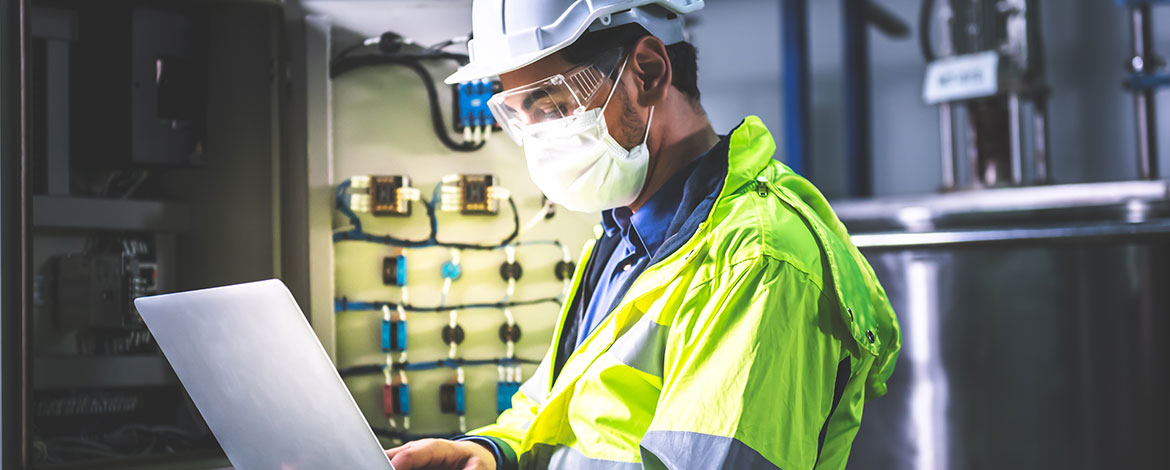
Managing and Planning
When the COVID-19 pandemic descended upon us so quickly in early 2020, nearly every restaurant was forced to part ways with some percentage of its workforce. Hiring back has been an enormous challenge, particularly as we continue to navigate consistently inconsistent rises and falls in COVID variants and their accompanying protocols and restrictions. Since many veteran restaurant workers have now transitioned to other industries, there is an inexperienced pool of applicants. The numbers are staggering:
- According to the Bureau of Labor Statistics, as of late 2021, restaurants were trying to fill 1.7 million jobs.
- 28% of operators believe it will take between 7 and 12 months to return to normal.
This is where a good CMMS platform can help.
In managing workload, a good CMMS allows you to ramp up quickly. It allows you to be in tune with your locations without having to be on-site. It maintains clear-cut processes for the benefit of veteran and new employees alike, keeping everyone on the same page and training much easier.
In the restaurant industry, things will go wrong; equipment will fail, facilities will break. A CMMS eliminates frantic questions of who should be called, where is the vendor’s contact info, how much must be allotted for that repair. By removing such concerns, your team can instead focus on running a successful restaurant and adapting to the new normal.
Another thing about this new, younger workforce: They are more “plugged-in” than any generation before. They’ve grown up surrounded by technology, and expect it to inform, guide, and assist them in everything they do. Their expectations at work will be no different, which is why you’ll want to increase operational efficiency and put actionable data and analytics at their fingertips. Train them, empower them, then allow them to focus on the guest experience that will be so vital in determining which restaurants continue to move forward.
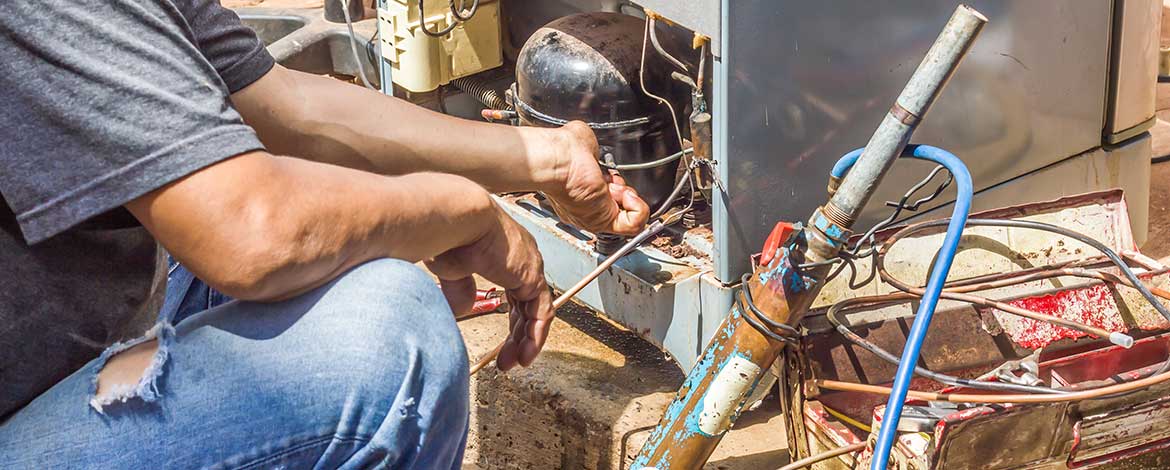
Real-time visibility
If we are to effectively manage this predominantly-new workforce, we’ll need more of a reliance on CMMS than ever. Heading into the pandemic, most restaurant concerns fell under the heading of penny-pinching, looking to see where they could trim the fat. These days, maintaining profits continues to be a concern. It has also been compounded by workforce worries, suddenly unavailable service providers, and other issues.
Let’s say it’s the dead of summer, 105 degrees outside, and your HVAC goes out. Now your guests are essentially sitting in a sauna, your kitchen is vulnerable, and you’re in danger of losing a day of revenue. It is crucial that whoever is addressing the problem is empowered to get ahold of the proper service provider, get them the information they need to come out, and have all the details they’ll need on the unit – its age, model number, maintenance history, and so on.
Questions abound, and you’ll have the answers: Is it time to repair or replace? What is the effectiveness of your contracted maintenance? Where are repair and maintenance dollars going, and why? With a CMMS like Ecotrak, a desktop interface and app allows you to streamline communication, reduce time on the phone, increase accuracy and get it all to the right vendor every time.
At a moment when you need streamlined facilities management to counter a reduced workforce, it’s more important than ever that you get things right the first time. A first-time fix helps minimize downtime, maintain that all-important relationship with your guests, and allow others to stay focused on front-of-house concerns. The next time they need a plumber, an electrician, or anyone else, all they need to do is open the app and with a few swipes, they can get the information and approvals they need to resolve a situation.
The CMMS platform then provides invoice statuses in real-time, so it’s simple to track costs, monitor spending, and ensure that your service provider has been paid. And you can bet that the service provider will remember your organization and promptness, so the next time that phone rings, they’ll pick up quickly.
Using data, you can reduce your repair and maintenance spending. You can improve vendor relations and sidestep equipment downtime. You can streamline your facilities management and navigate this tricky time of reduced workforces.
Responding to a crisis is one thing; preventing it is far better. A good CMMS solution is akin to having a psychic on your payroll, as it uses machine learning to analyze your data and automate the building of analytical models that predict when, where, and how soon your equipment will need to be repaired or replaced.

As we move past this pandemic, and the volume that comes back, your structure will be amplified. In other words, if you have a good structure and a solid CMMS solution in place and are well-deployed, you’ll be able to flex those strengths. If you don’t, your weaknesses will inevitably become your Achilles’ heel, leading to more wasted hours, wasted money, and wasted effort. Reducing spending and managing maintenance is the common goal of every restauranteur, and a good CMMS solution can position you to make sure that when we finally emerge from all this, you’ll be in control.
